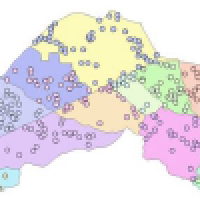µ-shapes: Delineating urban neighborhoods using volunteered geographic information
Keywords:
boundary delineation, urban neighborhoods, volunteered geographic information, spatial footprint, vague spatial regionAbstract
Urban neighborhoods are a unique form of geography in that their boundaries rely on a social definition rather than a well-defined physical or administrative boundary. Currently, geographic gazetteers capture little more than then the centroid of a neighborhood, limiting potential applications of the data. In this paper, we present µ-shapes, an algorithm that employs fuzzy-set theory to model neighborhood boundaries suitable for populating gazetteers using volunteered geographic information (VGI). The algorithm is evaluated using a reference dataset and VGI from the Map Kibera Project. A confusion matrix comparison between the reference dataset and µ-shape's output demonstrated high sensitivity and accuracy. Analysis of variance indicated that the algorithm was able to distinguish between boundary and interior blocks. This suggests that, given the existing state of GIS technology, the µ-shapes algorithm can enable neighborhood-related queries that incorporate spatial uncertainty, e.g., find all restaurants within the core of a neighborhood.

Downloads
Published
Issue
Section
License
Copyright (c) 2016 Matt Aadland, Christopher Farah, Kevin Magee

This work is licensed under a Creative Commons Attribution 4.0 International License.
Articles in JOSIS are licensed under a Creative Commons Attribution 3.0 License.
